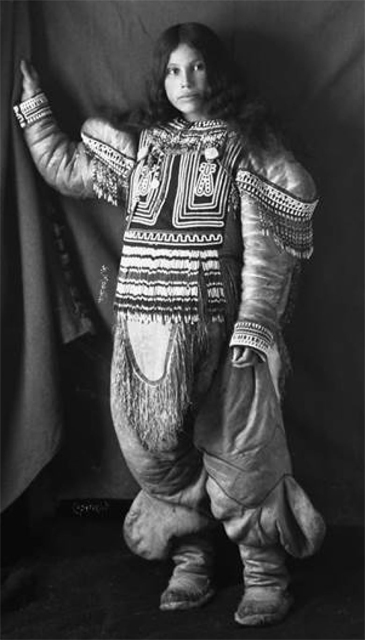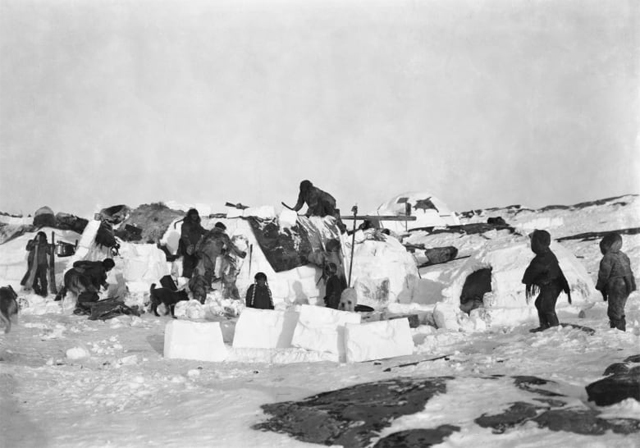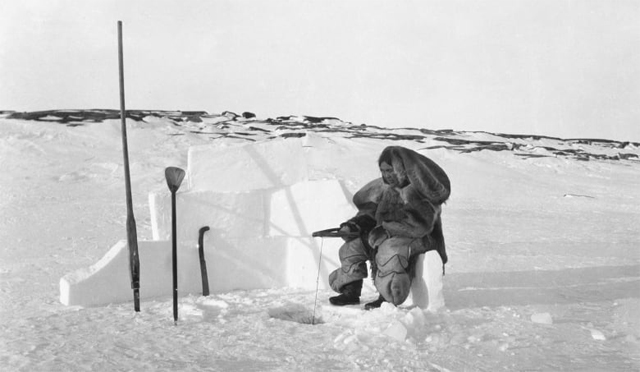Between 1903 and 1909, Douglas Moodie was stationed in Fullerton Harbour, Nunavut, and in Churchill, Manitoba, with the Northwest Mounted Police. Along with his wife Geraldine, the couple also traveled to Quebec and Labrador taking over 1,000 photographs of the Arctic scenery and the Inuit people along the way. Many of them are sharp and stunning images of Inuit on whaling boats, at summer camps, and hunting.

In 2015, the great-grandchildren of the Moodie’s donated the photos to the Glenbow Museum in Calgary. Last year, George Qulaut saw a photo of his late grandmother at the museum and he was overwhelmed. For a mostly oral culture, having access to photos taken over 100 years ago of deceased family members provides rich associations and meanings, according to an article in the CBC last week.
Qulaut’s grandmother died over 60 years ago when he was only 4 but he still has childhood memories of her. He tells the reporter that she loved children a lot and “she was a very interesting person.” He remembers communicating with her even though she was mute. He recognized her in the picture because he remembers her eyes.

He suggested to the Glenbow that the museum ought to take the photos to the people in Canada’s north so they might also have the chance to recognize family members and record their stories. The Glenbow is responding by sending Joanne Schmidt, the museum’s acting curator of indigenous studies, to visit a number of Inuit communities in September and October.
Schmidt will be traveling with 400 digital images stored on USB drives plus 70 prints of the originals and books that feature 100 of the photos. She plans to leave the USB drives and the books in the communities she visits and will give the prints to the people of Chesterfield Inlet, where many of the photos were taken.

Her goal for the Qatiktalik (Fullerton Harbour) Photo Narrative Project is to not only show the historic photos to the people but also to collect their stories, which the museum staff will add to their database. She said that Geraldine Moodie kept detailed notes and diaries so the Glenbow already has a lot of information about the individuals and communities represented. But the museum would love to know more. “Maybe some stories about those people or more information about their families or where they came from, that would be really special,” Schmidt said.
Qulaut summarizes the whole point of the traveling exhibition eloquently: “We don’t have a written history, all we have is oral history and it would have a huge impact on the younger generation, who they are, where they’re from.” He is pleased that the museum is doing it.
Starting on September 26 and continuing into mid-October, Ms.Schmidt will be taking the Inuit photos to Iqaluit, Rankin Inlet, Baker Lake, Chesterfield Inlet, and Churchill.